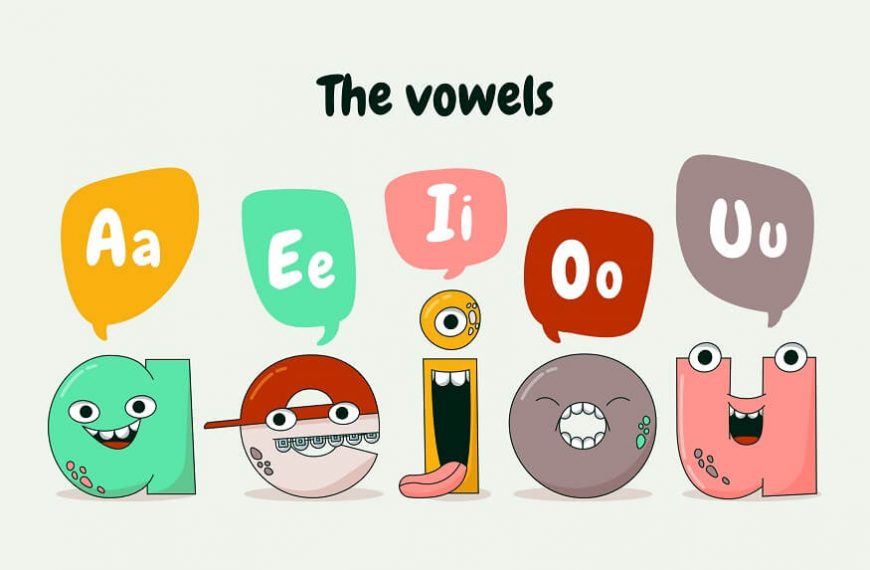Learning about vowels is super duper important for kids like you! Vowels are like special friends in words that make talking and reading easier. In this article, we’re gonna talk about how we can get even better at vowels, especially the short and long ones. We’ll chat about why vowels are so cool, check out which letters are our vowel buddies, count how many of them we have in English, and learn how to say words with long vowel sounds. These are all things that awesome teachers have figured out to help kids like you learn better and have tons of fun while doing it!
What is a Vowel?
Before delving into strategies for instructing vowels, it is essential to understand what a vowel is. A vowel is a speech sound produced without significant constriction or closure in the vocal tract. Unlike consonants, which involve some degree of obstruction, vowels are produced with an open vocal tract, allowing the free flow of air.
Vowels are super duper important for how we say and understand words. In English, we have five special letters that are vowels: A, E, I, O, and U. These letters can make short and long sounds that help us talk and learn how to talk. Vowels are like the ABCs of talking!
Vowel Letters: The Basics
Vowels are super important in English! There are five special letters that are vowels: A, E, I, O, and U. But what’s really cool is that these letters can make different sounds. They can make short sounds like “cat” and long sounds like “cake.” That’s what makes them interesting to learn about!
Short vowel sounds are like when you say words like “cat” or “pen,” and they’re quick and short! But, long vowel sounds happen when you see a letter ‘e’ that doesn’t say anything or when two vowels work together, like in “cake” or “team.” Those sounds are long and go on for a bit, and they sound like music!
Understanding the dual nature of vowel letters is essential when instructing children in differentiating between short and long vowel sounds.
How Many Vowels in English?
The English language boasts a total of 19 vowel sounds, which can be grouped into short and long vowels. These 19 sounds are created by the five vowel letters mentioned earlier, along with vowel combinations and diphthongs. To help children master vowel sounds, it’s crucial to introduce them to the concept of these 19 distinct sounds.
Long vowels, though, are a bit fancier. They put on a show! They often come with an extra letter like ‘e’ that stays silent but makes the vowel say its name. For example, in “cake” or “bike,” the ‘e’ at the end makes ‘a’ and ‘i’ say “aaay” and “iiii.”
Sometimes, long vowels team up with other letters, like ‘ai’ in “rain” or ‘ee’ in “tree.” They love to work together to make special sounds.
Teaching Short Vowel Sounds
Now that we’ve established the basics of vowels, let’s explore effective strategies for teaching short vowel sounds to children. Short vowel sounds are the foundation upon which early literacy skills are built.
- Phonemic Awareness: Begin by developing phonemic awareness—the ability to hear and manipulate individual sounds in words. Engage children in activities that require them to identify and produce short vowel sounds in various word contexts.
- Vowel Songs and Rhymes: Incorporate songs and rhymes that emphasise short vowel sounds. These catchy tunes make learning fun and memorable, helping children associate the sounds with specific words.
- Word Families: Introduce word families that share the same short vowel sound, such as the “-at” family (bat, cat, hat). This approach helps children recognize patterns and apply their knowledge to new words.
- Hands-On Activities: Utilise hands-on activities like building words with letter cards or using magnetic letters to form short vowel words. These activities make learning interactive and engaging.
- Reading Aloud: Read books with simple, repetitive short vowel words aloud to children. Encourage them to participate in reading and identify the short vowel sounds within the text.
By incorporating these strategies, educators can assist children in grasping short vowel pronunciations effectively.
Teaching Long Vowel Sounds
Teaching long vowel sounds requires a different approach compared to short vowels. Long vowel sounds are often introduced after children have a solid grasp of short vowel sounds.
- Silent ‘e’ Rule: There’s this really cool thing called the silent ‘e’ rule! It’s like a magical ‘e’ that doesn’t make any noise, but it does something really special. So, when you have a word with a vowel (you know, like ‘a,’ ‘e,’ ‘i,’ ‘o,’ or ‘u’) and then there’s a silent ‘e’ at the end, something amazing happens.
- Vowel Teams and Diphthongs: Introduce vowel teams (e.g., “oa” in “boat”) and diphthongs (e.g., “oi” in “coin”) that produce long vowel sounds. Provide practice words and encourage children to identify these patterns.
- Word Building: Engage children in activities where they can build long vowel words using letter tiles or cards. This hands-on approach reinforces their understanding of vowel combinations.
- Contextual Reading: Choose books and texts that contain words with long vowel sounds. Encourage children to read these texts and identify instances of long vowels in context.
- Word Games: Play word games like “I Spy” or “Vowel Bingo” to make learning long vowel sounds enjoyable and interactive.
These strategies, when integrated into the curriculum, assist children in mastering both short and long vowel pronunciations, fostering their reading and communication skills.
Instructing children on vowel pronunciation is a vital component of early education. Short and long vowel sounds are the cornerstone of language acquisition, enabling effective reading and communication skills. By understanding what vowels are, the role of vowel letters, the number of vowels in English, and employing effective teaching strategies, educators can make this learning journey engaging and fruitful for young learners.
In conclusion, creating a supportive and engaging environment that incorporates phonemic awareness, hands-on activities, and contextual learning is essential for helping children grasp short and long vowel pronunciations. These strategies empower children with the linguistic tools necessary for successful communication and lifelong learning.
Parents and educators, your commitment to nurturing these skills is crucial. For a nurturing and supportive learning environment, consider EuroKids. Our experienced educators use research-backed strategies to ensure your child’s success in acquiring essential language skills and much more.
Visit the EuroKids website to learn more about how EuroKids can assist your child on their educational journey. Give your child the best start in education with EuroKids.















